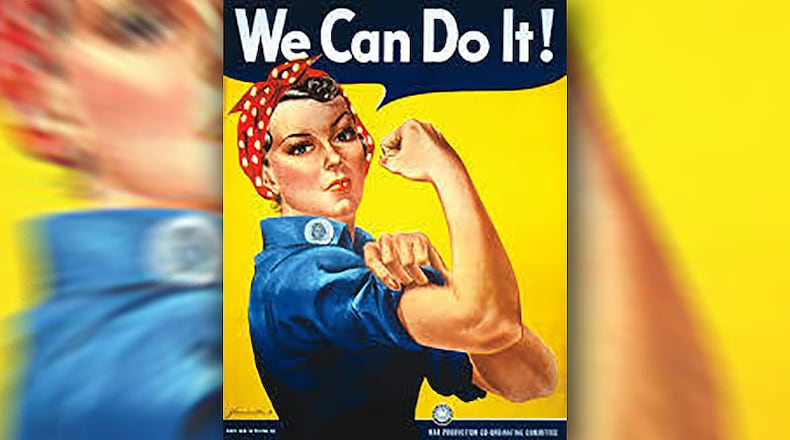Rosalind P. Walter, the New York native who would become the singular symbol of women empowerment, died Wednesday at age 95, according to several reports.
Nicknamed Rosie, she inspired the song that would eventually spawn the World War II-era poster of a woman in a headscarf, sporting a rolled-up sleeve and promoting the message “We can do it!”
Rosalind P. Walter grew up in Long Island, New York. Though her family lived comfortably, the young, ambitious Walter chose to join millions of other women supporting the troops during World War II, according to The New York Times. The role of Walter and other women who joined the efforts was to arm the troops with munitions, warships and aircraft.
Walter took on the once male-dominated duty of working the night shift driving rivets into the metal bodies of Corsair fighter planes at a plant in Connecticut. A newspaper column about her inspired a troop-rallying, 1942 song that turned her into the legendary Rosie the Riveter, the archetype of the hardworking women in overalls who supported men fighting for the U.S.
Written by Redd Evans and John Jacob Loeb and popularized by the Four Vagabonds, the bandleader Kay Kyser and others, “Rosie the Riveter” captured a historical moment that helped lay the groundwork of the women’s movement of the last half of the 20th century. It began:
All the day long whether rain or shine
she's a part of the assembly line
She's making history,
working for victory —
Rosie, brrrrr, the Riveter
Keeps a sharp lookout for sabotage
Sitting up there on the fuselage
That little frail can do, more than a male can do —
Rosie, brrrrr, the Riveter."
A year after the war’s end, Walter, by then working as a nurse’s aide at Bellevue Hospital in Manhattan, married Henry S. Thompson, a lieutenant with the Naval Reserve and a graduate of Stanford University, at the Fifth Avenue Presbyterian Church. They had a son, also named Henry, before the couple divorced in the 1950s.
Beyond the ubiquitous "Rosie" persona, Walter became the common link among women seeking to promote equal rights related to equal pay and recognition in the workplace. Due to the creative representation of her in song and eventually the image, which was modeled after the late Naomi Parker Fraley, the world would become familiar with Rosie the Riveters across the country, becoming the subject of museum exhibits, think pieces and more.
By the time of her death, she had become more than just a caricature. She was in the public eye for decades to come, and was a major philanthropist and one of PBS’ principal benefactors, her name intoned with others on programming including “Great Performances,” “American Masters,” “PBS NewsHour,” “Nature” and documentaries by Ken and Ric Burns.
"Ms. Walter had been drawn to public television in part to compensate for lost opportunities during the war, Allison Fox, WNET's senior director for major gifts," told Jezebel magazine. "In serving her country, Ms. Walter had sacrificed a chance to attend either Smith or Vassar College," Fox said, and found that public television documentaries and other programs helped fill in the gaps in her education.
“She cared deeply about the public being informed and felt that public television and media is the best way to accomplish this,” Fox said.
Walter is survived by her son, Henry S. Thompson; two grandchildren; four step-grandchildren; and several step-great-grandchildren.
About the Author
The Latest
Featured



